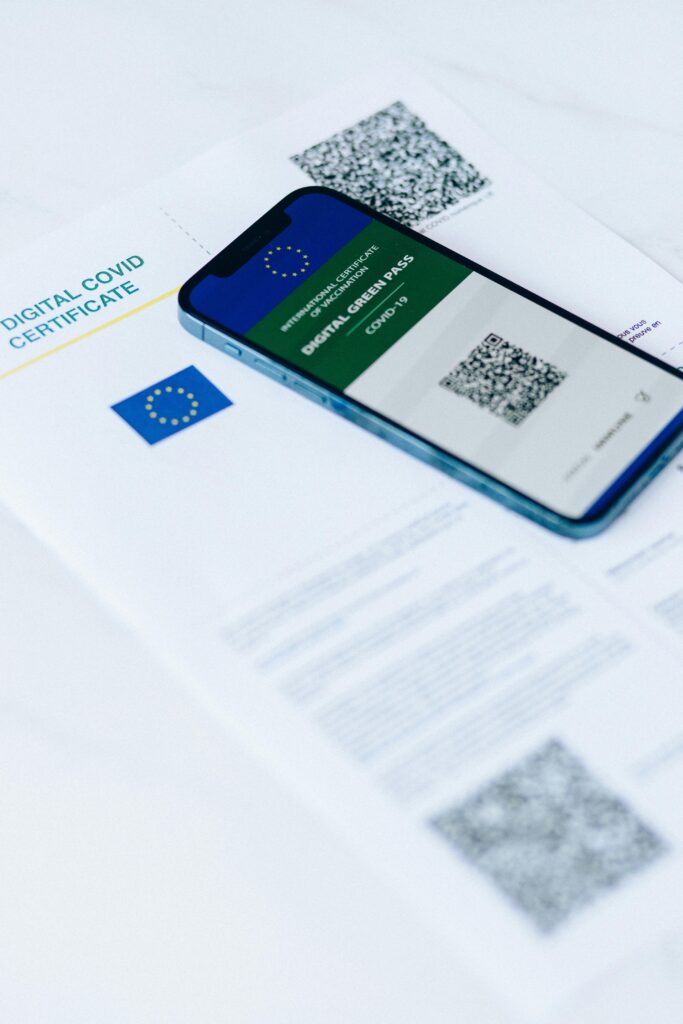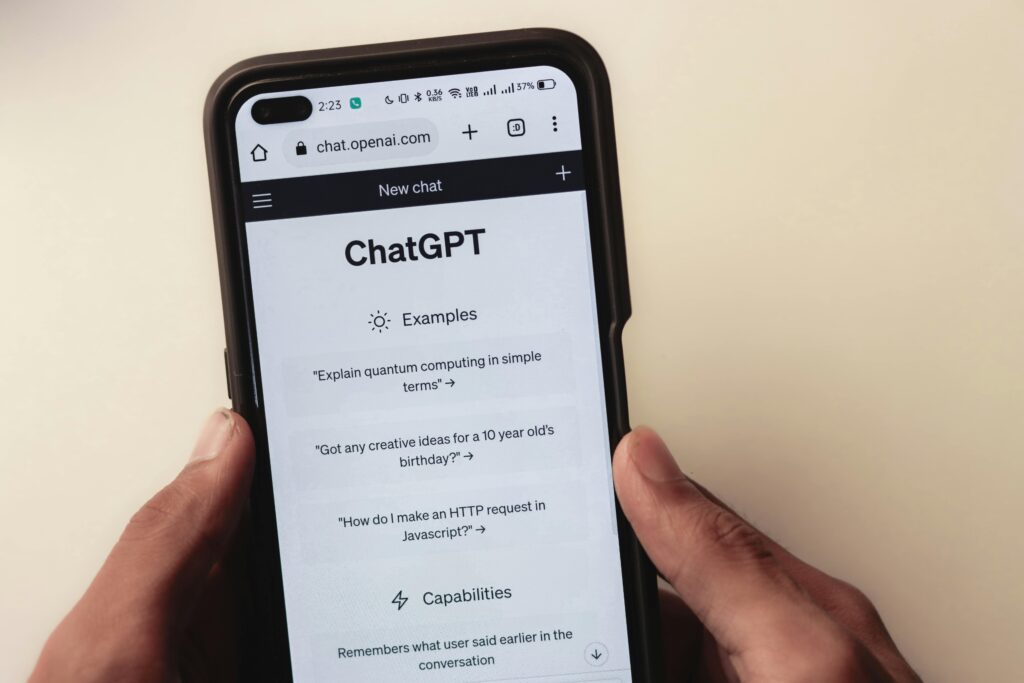Table Contents of Online Health Services
- Introduction to Online Health Services
- What is Telemedicine?
- The Rise of Virtual Healthcare
- Digital Health: Changing the Game
- E-Health: Health Services at Your Fingertips
- Remote Healthcare: What Does It Mean?
- Health Tech: The New Frontier in Medicine
- Telehealth Platforms: Connecting Doctors and Patients Online
- The Power of Online Consultations
- Virtual Doctor Visits: Convenience vs. Care
- Health Apps: Your Personal Health Assistant
- Remote Patient Monitoring: Keeping Track from Afar
- Medical Chatbots: The Future of Health Conversations
- Security and Privacy in Online Health Services
- The Benefits of Telemedicine for Rural Areas
- How Online Health Services are Revolutionizing Mental Health Care
- How to Choose the Right Telemedicine Service
- Challenges Faced by Online Health Services
- The Role of Artificial Intelligence in Telehealth
- The Future of Healthcare: What’s Next?
- Conclusion: A Healthier, More Accessible Future
Introduction of Online Health Services
In today’s fast-paced world, health and wellness are more important than ever, but so is convenience. With the rise of technology, healthcare has entered the digital realm, making it possible to access medical care from the comfort of your home. Online health services, also known as telemedicine or virtual healthcare, allow patients and doctors to connect virtually, eliminating the need for face-to-face visits. These services have been a game-changer, especially during global events like the COVID-19 pandemic, when staying at home was a priority.
This eBook will explore the many facets of online health services, from virtual doctor visits to health apps that monitor your vitals. Whether you’re a teenager looking to understand how digital health can help you, or an adult seeking better ways to manage your healthcare, this guide will provide the tools and knowledge you need.

What is Telemedicine?
Telemedicine is one of the first forms of online healthcare. It allows patients to consult with doctors remotely using video calls, phone calls, or even text messages. Imagine you’re feeling sick but can’t make it to the doctor’s office. With telemedicine, all you need is your smartphone or computer, and you can be connected with a healthcare professional within minutes.
The best part? You don’t need to sit in a waiting room for hours, and you don’t have to worry about taking time off work or school. Telemedicine is especially beneficial for people who live in rural or remote areas where healthcare facilities might be far away. It’s also great for people with busy schedules who need fast, convenient access to a doctor.
The Rise of Virtual Healthcare
Virtual healthcare is closely tied to telemedicine but is a broader concept. It’s not just about seeing a doctor; it encompasses all types of digital health services. Virtual healthcare includes everything from online prescriptions to digital tools that help manage chronic conditions.
The rise of virtual healthcare can be attributed to technological advancements, such as the availability of high-speed internet, smartphones, and better video conferencing tools. These advancements have made it easier than ever to connect with doctors and receive care from the comfort of your own home.
Many health insurance companies now offer virtual healthcare options, making it even more accessible. Instead of driving to a clinic, you can have your appointment from your bedroom, your couch, or even a park bench.

Digital Health: Changing the Game
Digital health refers to a wide range of health services and technologies that are used to improve health outcomes. This includes everything from wearable fitness trackers to apps that help you monitor your health conditions like diabetes or asthma. Digital health allows people to take charge of their own health in ways that were never possible before.
For example, wearable devices like smartwatches can track your heart rate, sleep patterns, and physical activity. Some even monitor blood oxygen levels or measure stress levels. This data can be shared with your doctor, allowing them to make more informed decisions about your health.
Digital health is not just for the tech-savvy; it’s for everyone. Many apps are designed to be user-friendly, making it easier for anyone to track their health and wellness goals.
E-Health: Health Services at Your Fingertips
E-health is a broad term that covers all online health services, including telemedicine, digital health, and health apps. With e-health, all of your medical information is available at the touch of a button. You can book appointments, track your health, communicate with doctors, and even receive prescriptions—all online.
One of the most convenient aspects of e-health is that it allows for a continuous flow of communication between patients and healthcare providers. For example, if you’re taking medication for a condition, your doctor can monitor your progress through e-health platforms and adjust your treatment plan without needing you to visit the office.
For teenagers who might not always have the time or desire to go to the doctor, e-health is an ideal solution. With e-health, it’s easier than ever to stay on top of your health.

Remote Healthcare: What Does It Mean?
Remote healthcare refers to medical services that are provided to patients without them needing to leave their homes. It’s a key part of online health services, as it allows doctors and healthcare providers to assess, diagnose, and treat patients from afar.
Remote healthcare includes things like telemedicine consultations, remote monitoring of chronic conditions, and even virtual therapy sessions. It’s a flexible and cost-effective way to receive medical care, especially when going to a doctor’s office may not be an option.
For example, someone with high blood pressure could wear a monitor that sends data to their doctor in real-time. Based on this information, the doctor can adjust their treatment plan, all without the patient needing to visit the office.
Remote healthcare is an ideal option for busy families, seniors, or people who live in areas without easy access to medical care.
Health Tech: The New Frontier in Medicine
Health technology (or “health tech”) is the technology used to improve the quality and efficiency of healthcare. It ranges from telemedicine platforms to advanced diagnostic tools powered by artificial intelligence. Health tech is transforming the way we receive care and making healthcare more personalized.
For instance, smart medical devices can help track health data and even provide real-time feedback to patients. Artificial intelligence is also being used to help diagnose conditions, such as analyzing medical images or predicting future health risks based on a person’s medical history.
Health tech isn’t just for doctors—many of the tools are designed for patients, giving them more control over their own health. Whether it’s through an app that helps you monitor your nutrition or a wearable that tracks your steps, health tech is making it easier than ever to stay on top of your health.

Telehealth Platforms: Connecting Doctors and Patients Online
Telehealth platforms are online tools that allow patients to connect with healthcare providers via video, phone, or text. These platforms are designed to make healthcare more accessible and convenient. They can be used for consultations, follow-up appointments, mental health support, and even remote diagnoses.
Popular telehealth platforms include Teladoc, Amwell, and Doctor on Demand. These platforms typically allow patients to book appointments, choose their preferred doctor, and receive a diagnosis without leaving home. Many of these platforms also provide 24/7 access to healthcare professionals, making it easier to get care whenever you need it.
For example, if you’re experiencing symptoms of a cold or need advice on how to treat a minor injury, you can book an appointment on a telehealth platform and talk to a doctor in minutes. This kind of accessibility is especially valuable when you’re busy with school, work, or family responsibilities.
The Power of Online Consultations
Online consultations are a huge part of telemedicine, making healthcare more accessible than ever before. Instead of having to travel to a doctor’s office, you can simply log in to a platform and speak with a healthcare professional in real-time.
The power of online consultations lies in their convenience and ability to provide timely care. Whether you have a simple question about a medication or need advice on a potential health issue, an online consultation allows you to get answers quickly. It’s especially useful when you’re unsure if you need to visit a doctor in person.
Another major advantage is that online consultations can help reduce the spread of contagious diseases. If you’re feeling sick but aren’t sure if you need to visit a doctor, an online consultation can help you determine whether it’s necessary to go in for an in-person visit. In some cases, doctors can even prescribe medications or recommend treatments based on the consultation.

Virtual Doctor Visits: Convenience vs. Care
Virtual doctor visits are one of the most popular aspects of online health services. They allow patients to meet with doctors remotely using video or phone calls. While these visits are incredibly convenient, they do raise some questions about the quality of care provided.
Virtual doctor visits are best suited for non-emergency situations, such as routine checkups, follow-ups, or discussions about minor health concerns. If you’re dealing with a serious illness or injury, an in-person visit is usually recommended. However, virtual visits can still provide valuable advice, prescriptions, or referrals to specialists.
The convenience of virtual doctor visits makes them a great option for people who live in rural areas, have limited mobility, or simply want to save time. That said, there’s still a need for physical exams and more complicated procedures that can only be done in-person. The key is knowing when a virtual visit is appropriate and when an in-person visit is necessary.
Health Apps: Your Personal Health Assistant
Health apps have become a go-to resource for people who want to stay on top of their wellness. These apps can help track your exercise, nutrition, sleep patterns, and even mental health. There’s an app for just about every aspect of health, from weight management to mindfulness practices.
Some popular health apps include MyFitnessPal for tracking meals, Headspace for meditation, and Fitbit for monitoring physical activity. These apps offer users valuable insights into their health, giving them the tools they need to make informed decisions.
Many apps even sync with wearable devices, such as smartwatches, to collect more detailed data about your health. By continuously tracking your progress, health apps help you stay motivated and on track to achieve your goals. Plus, they often offer personalized recommendations based on your health data.

Remote Patient Monitoring: Keeping Track from Afar
Remote patient monitoring (RPM) is a game-changer for people with chronic conditions such as diabetes, heart disease, or asthma. RPM involves the use of devices that collect health data and send it to healthcare providers for monitoring. These devices can include blood pressure cuffs, glucose monitors, and even wearable heart rate monitors.
RPM is especially helpful because it allows doctors to track a patient’s condition over time without needing the patient to visit the office regularly. This ongoing monitoring can help doctors identify potential problems before they become serious.
For example, if a patient’s blood sugar levels are consistently high, a doctor can adjust their treatment plan without the patient needing to visit the office. RPM also helps patients feel more in control of their health, as they can see their progress and share important information with their doctor.
Medical Chatbots: The Future of Health Conversations
Medical chatbots are an innovative use of artificial intelligence (AI) that allows patients to interact with a bot for basic healthcare advice and information. These chatbots can help answer health-related questions, provide symptom checkers, and even offer basic guidance for treating minor issues.
Chatbots like Babylon Health and Ada are programmed to understand symptoms and suggest possible conditions, helping patients determine whether they need to seek further medical attention. While they aren’t a substitute for professional healthcare, they provide a convenient first step in understanding your symptoms.
In the future, chatbots could be even more advanced, offering personalized health advice based on an individual’s medical history, location, and lifestyle. They could also play a crucial role in reducing wait times for patients and improving access to healthcare, especially in areas with few doctors or clinics.

Security and Privacy in Online Health Services
As with any online service, privacy and security are crucial when it comes to online health services. Health-related data is sensitive, and both patients and healthcare providers need to ensure that this information is kept secure. Many telemedicine platforms and health apps are subject to strict privacy regulations, such as the Health Insurance Portability and Accountability Act (HIPAA) in the U.S.
Patients should also take steps to protect their personal health data by choosing secure platforms, using strong passwords, and avoiding sharing sensitive information over unsecured networks.
While online health services have many benefits, ensuring the safety of your data is an ongoing process. As the technology evolves, so too will the security measures designed to protect patient privacy.
The Benefits of Telemedicine for Rural Areas
Telemedicine has proven to be an especially powerful tool for people who live in rural areas where healthcare facilities may be scarce or far away. In these areas, the nearest doctor or hospital could be hours away, making it difficult for people to get timely medical care. Telemedicine bridges this gap by allowing patients to access healthcare professionals remotely.
Rural residents often face additional challenges like transportation issues, limited access to specialists, and fewer healthcare providers. With telemedicine, they can easily connect with doctors, mental health professionals, and specialists from the comfort of their own homes.
This is especially beneficial for older adults or individuals with mobility issues, who may find it difficult to travel long distances for healthcare. Telemedicine makes healthcare more accessible, affordable, and efficient for people living in rural areas, improving health outcomes and overall quality of life.

How Online Health Services are Revolutionizing Mental Health Care
In recent years, online health services have transformed mental health care. Therapy sessions, counseling, and psychiatric support are now available via video, phone calls, and even text-based platforms. This has made mental health care more accessible, especially for those who might not otherwise seek help due to stigma, cost, or geographical limitations.
Mental health apps like BetterHelp and Talkspace offer users the opportunity to speak with licensed therapists, psychologists, and counselors without the need for in-person appointments. These platforms have proven to be particularly beneficial for young people, who may find it easier to open up online than in person.
The ability to access mental health support remotely also helps reduce the barriers that might prevent someone from getting the help they need, such as busy schedules, the lack of nearby mental health professionals, or social anxiety. As the stigma around mental health continues to decrease, more people are turning to virtual therapy and counseling as a viable option for their mental well-being.
How to Choose the Right Telemedicine Service
Choosing the right telemedicine service can be overwhelming with so many options available. Whether you need a platform for online consultations, remote monitoring, or mental health support, it’s important to do your research and select one that meets your needs.
Here are a few things to consider when choosing a telemedicine service:
- Availability of Services: Ensure that the platform offers the type of care you need, whether it’s general consultations, mental health services, or specialist care.
- Doctor Credentials: Check the qualifications and experience of the healthcare providers on the platform to ensure you’re getting reliable care.
- Cost: Many telemedicine services charge a fee for consultations. Make sure to understand the pricing structure and whether your insurance will cover the cost.
- User-Friendliness: Choose a service that is easy to navigate. A user-friendly app or website ensures that you’ll be able to quickly book appointments and access medical care.
- Reviews and Reputation: Look for reviews from other users to get a sense of the service’s quality and reliability.
By carefully considering these factors, you can ensure that you choose the telemedicine platform that best suits your health needs.

Challenges Faced by Online Health Services
While online health services offer numerous benefits, they are not without their challenges. One of the most significant challenges is ensuring access for everyone, especially those who may not have reliable internet connections or the devices needed to access virtual healthcare. This digital divide can prevent certain groups, particularly elderly individuals or those in low-income areas, from benefiting fully from online health services.
Another challenge is the need for widespread healthcare professional adoption. Not all doctors or healthcare providers are comfortable with or trained in using telemedicine platforms, which can result in a lack of consistency in virtual care.
Furthermore, the quality of care provided through virtual platforms can sometimes be questioned. While telemedicine is effective for many conditions, there are instances where in-person visits are necessary for a proper diagnosis or treatment.
Lastly, as discussed earlier, privacy and security concerns are also major issues for telemedicine. Protecting patient data from cyber threats requires constant effort and investment from both healthcare providers and technology companies.
The Role of Artificial Intelligence in Telehealth
Artificial intelligence (AI) is rapidly transforming telehealth, enhancing both the patient experience and the efficiency of healthcare services. AI-powered tools can help doctors analyze medical data, assist in diagnosing conditions, and even predict health outcomes.
For instance, AI can analyze medical imaging to detect issues like tumors or fractures, sometimes with greater accuracy than human doctors. AI chatbots are also being used to provide instant responses to patient inquiries, helping to triage patients and direct them to the appropriate healthcare providers.
AI is not meant to replace doctors but rather to complement their work. By using AI to handle routine tasks or analyze data, healthcare professionals can focus on more complex cases, ultimately improving the quality of care.
In telehealth, AI-driven tools can also enhance patient engagement by providing personalized health recommendations, reminders for medications, or follow-up care instructions. As AI continues to evolve, its role in telehealth is likely to expand, bringing even greater innovations to the field.

The Future of Healthcare: What’s Next?
The future of healthcare is undeniably digital, with online health services expected to play an even larger role in the coming years. We are likely to see more advanced telemedicine platforms that incorporate artificial intelligence, virtual reality, and even augmented reality to provide more immersive and accurate healthcare experiences.
For example, VR could be used to allow patients to “meet” their doctors in a virtual environment, making the experience feel more personal. Additionally, remote surgeries, where surgeons perform operations with the help of robotic arms controlled remotely, could become more common, improving access to specialized care.
As the world becomes more interconnected, healthcare will become more decentralized. People will be able to access a wide range of health services without needing to leave their homes, including consultations with doctors from other countries.
The rise of online health services also opens up opportunities for global health initiatives, as people in underserved areas will have easier access to healthcare professionals and resources. The possibilities are endless, and the future of healthcare looks incredibly exciting.
Conclusion: A Healthier, More Accessible Future
Online health services have already made a huge impact on the healthcare landscape, and their influence will continue to grow in the coming years. With the ability to consult with doctors, monitor health conditions, and access mental health support—all from the comfort of home—online health services are transforming the way we approach healthcare.
Whether you’re dealing with a common cold, managing a chronic condition, or seeking therapy, digital health platforms provide the tools you need to take control of your well-being. As technology advances and accessibility improves, the future of healthcare looks brighter, healthier, and more accessible for everyone.
With online health services, the doctor is always just a click away, and healthcare is becoming a more personalized, convenient, and efficient experience. The world of telemedicine, virtual healthcare, and digital health is just getting started—and the possibilities are limitless.



2 thoughts on “Online Health Services”